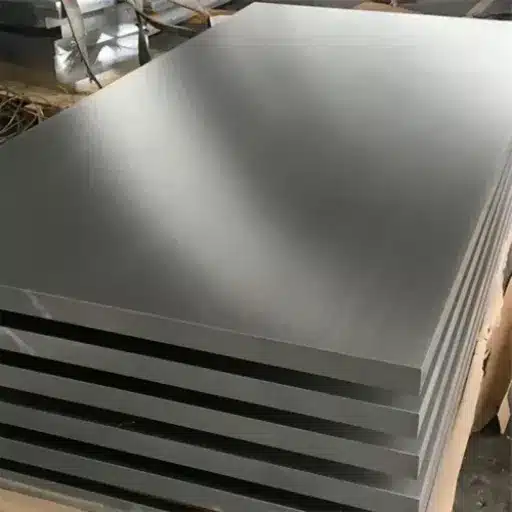It is impossible to put a price on durability in the industries that use rugged equipment and heavy operations. Material-wise, abrasion resistant (AR) steel is the savior in such scenarios. AR steel plates being able to endure the most demanding conditions are manufacturing, construction, and mining among other fields that have become reliant on such a critical material. The uniqueness of this type of steel is a question that comes to the mind of many. In addition, it is good to clarify how it can be a factor to spend less on your operations. This article takes a long route to the point of abrasion resistant steel, its qualities, major benefits, and reasons for its being the best option in wear resistance for some of the harshest places. It is not a matter of being a pro in the industry or a beginner, all you need is this guide which will be providing you with valuable insights that would help you in making the right choices regarding the wear-resistant materials.
Understanding Abrasion and Its Consequences on Steel
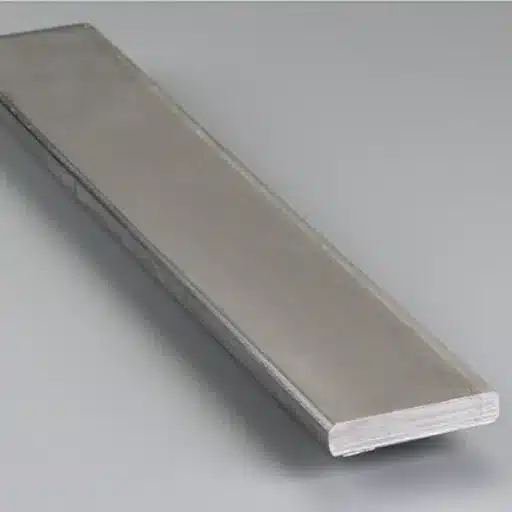
The gradual process of steel wearing out due to friction, impact, or chemical reactions is called abrasion, in which case the steel’s strength and efficiency can be affected negatively over time. Using steel that is resistant to abrasion allows me to achieve a large extent of the equipment lifespan and thereby keep the good running even in the most rugged and demanding places.
What is Abrasion?
The term Abrasion is used to name the process during which, due to the frictional forces of the contacting materials, the surface of one or the other material is worn away. This process is usually happening when two surfaces are mutually rubbing or when an abrasive material is engaged with a material resulting in a slow material removal. This phenomenon is even more pronounced in industrial operations where machines, tools, and components are subjected to very hard impacts or exposed to bad conditions.
From the scientific point of view, abrasion can be put into three categories, namely–sliding, rolling, and impact–each named after the type of forces responsible. Research has reported cases in mining, construction, and manufacturing when factories indeed lost their precious material to abrasions, hence incurring additional maintenance costs as well as downtime. For example, it is said that in mining operations, up to 70% of the wear in equipment is due to abrasive wear, thus the remarkable impact on operational efficiency.
Consequences of Abrasion on Steel Structures
The effects of abrasive action on the steel structures can be durably damaging or not, depending on the industry: for example, they are of the opposite case in mining, construction, and manufacturing. One of the main concerns while utilizing steel in such areas is wear or loss of material, which could eventually lead to thinning and tremendous weakening of the steel. The extent of the abrasion is a function of various factors like the hardness of the abrasive material, the amount of pressure applied, and the relative motions of the surfaces.
It has been revealed that a standard structural steel that is usually classified with a hardness of around 120-180 HBW will be subjected to rapid wear rates in abrasive conditions. The opposite takes place with the so-called abrasion-resistant steels like AR400 and AR500, which are quite durable. For example, AR400 has a hardness of around 400 HBW and thus it retains excellent resistance and is able to stand high-impact applications. Likewise, AR500, which has a hardness of about 500 HBW, provides the best quality in environments where there are harsh abrasions and impacts thus it is the best choice for industrial equipment like dump truck beds, heavy machinery, and conveyor systems.
Overview of Abrasion Resistant Steel
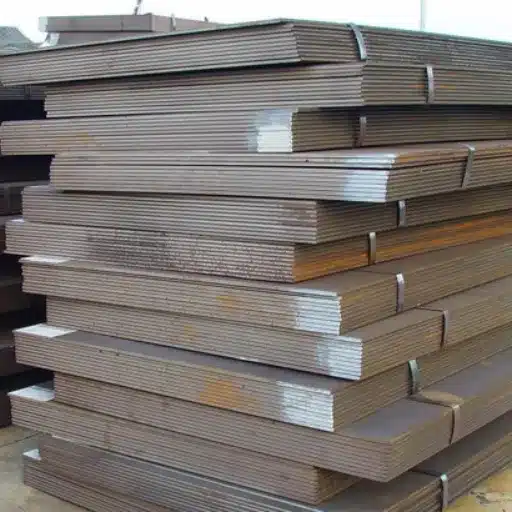
In my opinion, steels like AR400 and AR500 have properties that are opposite to the conditions they are put to, i.e., their hardness measured in HBW makes them nothing less than the best, AR400 and AR500 respectively in high-impact and severe-abrasion areas.
Definition and Characteristics of Abrasion Resistant Steel
The term “abrasion resistant (AR) steel” refers to a steel alloy of high carbon content that has been specifically engineered to withstand wear and damage in very difficult and demanding conditions. Unlike normal steel grades, AR steel is made with more carbon and other alloying elements that make the steel harder and more durable. The chief property of the abrasion resistant steel is that it can endure mechanical wear and tear without losing its quality, which makes it a material of choice for the cases where friction, impact, or sliding abrasion happen quite often.
AR steel is classified according to hardness levels mostly, which are measured using the Brinell Hardness (HBW) test. For instance, the well-known grades such as AR400 or AR500 have Brinell hardness values of about 400 HBW and 500 HBW, respectively. These hardness levels give a good idea of the steel’s capacity to resist the deformation that can be caused by high pressure while keeping toughness that is enough to crack prevention. AR500, for example, is very much in demand in mining, construction, and material handling industries, where a part exposed to extreme abrasion requires durability and longevity.
Applications of AR Steel in Various Industries
1. Mining and Quarrying
The mining and quarrying industry heavily relies on AR steel for its resistance to wear and tear caused by heavy machinery and abrasive materials. AR steel is the material of choice for constructing chutes, crushers, and conveyors. Industry reports suggest that the use of AR steel in mining equipment can lead to a lifespan increase of up to 30%, which translates to a significant reduction in maintenance costs and downtime.
2. Construction and Infrastructure
In construction AR steel is used in making machines such as bulldozer blades, loader buckets, and dump truck beds. Impact and abrasion are the characteristics of material used in these applications, and they are supposed to last during continuous use. According to studies, the application of AR steel in construction machinery can increase the efficiency of the process by 25% due to less wear and, consequently, greater performance reliability.
3. Recycling and Waste Management
The recycling sector is always facing significant wear and tear problems as the processing of sharp and abrasive materials never stops. It is AR steel that comes to the rescue in making shredders, crushers, and sorting equipment that are able to meet the demands of such tough operations. Studies indicate that AR steel enhances the durability of recycling equipment, thereby lessening the frequency of the replacements needed.
Types of AR Steel Grades
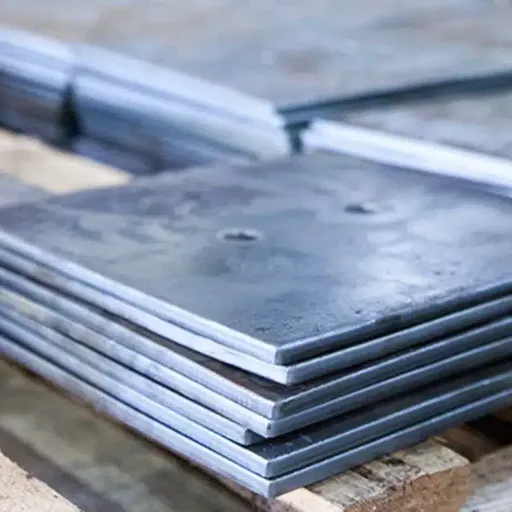
AR400: Properties and Applications
AR400 is a well-known grade of abrasion resistant steel that is characterized by its great hardness, strength and durability. It has a hardness of forty to fifty Brinell Hardness numbers (HBW), which makes it perfect for wear and impact resistance demanding applications. The production of AR400 through a quenched and tempered process guarantees a fine microstructure and excellent mechanical properties including good weldability and formability.
Key Properties of AR400 Steel:
- Hardness: Around 400 HBW, offering superior resistance to abrasion and surface wear.
- Tensile Strength: Typically ranging between 145-175 ksi, contributing to its high structural integrity under strenuous conditions.
- Flexibility: Despite its hardness, AR400 can be bent or formed into various shapes depending on the application requirements.
- Thickness Range: Commonly available in thicknesses from 3/16 inch to over 2 inches, catering to a variety of industrial needs.
AR450: Advantages Over Other Grades
AR450 is a premium abrasion-resistant steel grade that offers enhanced performance over other grades. Known for its balance of hardness and toughness, AR450 is specifically engineered for applications requiring superior resistance to wear and impact.
✓ Enhanced Hardness and Durability
With a nominal hardness of 450 HBW, AR450 features increased surface hardness compared to lower grades like AR400, significantly improving its resistance to abrasion and wear. This makes it ideal for demanding applications such as mining, construction, and material handling.
✓ Improved Impact Resistance
AR450 not only offers superior wear resistance but also retains excellent toughness, allowing it to absorb higher impacts in extreme conditions. This advantage extends the service life of equipment subjected to heavy loads or intense stress.
✓ Longer Lifespan
A study comparing AR450 and AR400 in industrial machinery revealed that AR450 provided up to 40% longer service life in high-abrasion environments, reducing the frequency and cost of part replacements.
Comparative Analysis of AR Steel Grades
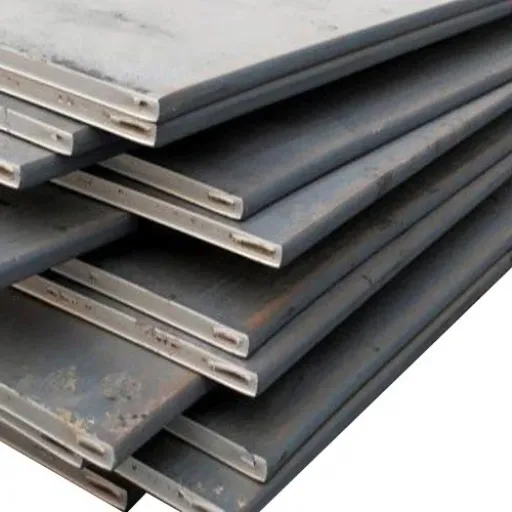
Even though both AR400 and AR450 are undoubtedly good steel grades, I would personally prefer AR450 for the applications that demand the most wear resistance and longevity. It is the keener and more efficient choice in the challenging environment due to its increased wear resistance and at the same time lighter structure, thus saving on cost and energy.
Performance in Wear Resistance: AR400 vs. AR500
AR400
Usually, it is around 400 HBW (Brinell Hardness) hardness that AR400 hardness plates are handled and termed wear resistance. Their good mediocre impacts and hard wear are concentrated on the slight hurdle of hardness where logically abrasion is not so hard, so they are giving it slight ductility too. The application where some level of flexibility is required with no durability compromise is the one that AR400 is ideally placed for, like construction equipment, mining, and truck bed plus AR400 is commonly used. The industries are particularly favoring AR400 for its combination of wear resistance and fabrication ease since it is slightly easier to cut, form, and weld than harder grades.
AR500
In contrast, AR500 steel has a better hardness rating of about 500 HBW and gives the best wear resistance in very abrasive conditions. Hardness increase translates to longevity and lesser replacements from using the steel material in very harsh operating environments. AR500 is mainly used in protective panels, mining operations, and ballistic applications, where the demand is for extreme durability. However, the increased hardness may also have a negative effect on the machineability and formability of the steel requiring special tools and techniques to use the material effectively.
| Steel Grade | Hardness (HBW) | Primary Applications | Key Characteristics |
|---|---|---|---|
| AR400 | ~400 HBW | Construction equipment, mining, truck beds | Good ductility, easier to fabricate, weld and form |
| AR500 | ~500 HBW | Protective panels, mining operations, ballistic applications | Maximum wear resistance, longer lifespan, harder to machine |
Cost-Effectiveness and Durability
When considering abrasion-resistant materials like AR400 and AR500, the cost-effectiveness and durability considerations are major factors that usually lead to the final determination. AR400 is normally cheaper than AR500, thus it is a price-efficient selection for areas where wear resistance is not the main concern. Budgetary considerations are particularly important for industries such as construction and manufacture. As per the latest information, the price of AR400 is in the range of $1.00 to $1.50 per pound, while AR500 can cost somewhere from $1.50 to $2.00, due to its greater wear resistance.
But durability counterbalances the initial outlay. Abreast with the hardness, AR500’s cuttability in terms of equipment and direction of usage. The practice of using AR500 in heavy-duty application can gear up to 50% of equipment life, compared to using AR400 or other lower-grade alternatives, which in the long run is a saving strategy. Engineers by evaluating individual operating requirements and weighing the cost against projected longevity can enhance both performance and economic value to the utmost.
| Grade | Price Range (per pound) | Equipment Life Improvement | Best For |
|---|---|---|---|
| AR400 | $1.00 – $1.50 | Moderate increase | Budget-conscious projects |
| AR500 | $1.50 – $2.00 | Up to 50% longer lifespan | Heavy-duty, long-term applications |
Industry Standards and Specifications for AR Steel
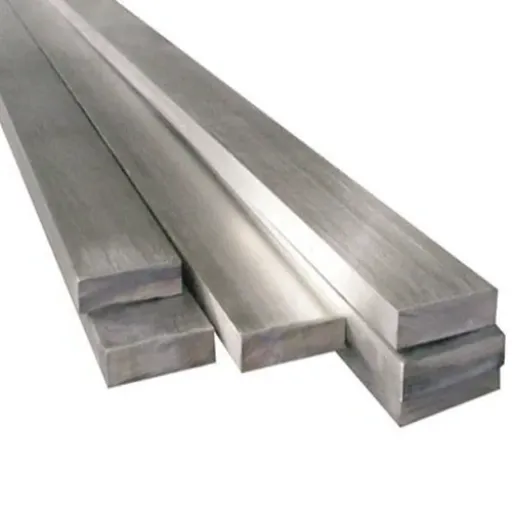
My suggestion would be to choose AR500 steel for extremely demanding uses where durability and resistance to wear are of paramount importance. The higher the lifespan the higher its cost will be initially decreased by reduced frequent replacements and repairs, thus saving money over a period of time.
Overview of ASTM Standards for AR Steel
The AR steel grades, for instance AR400 and AR500, are subjected to the strict ASTM (American Society for Testing and Materials) standards thus making quality and uniformity guaranteed in their manufacturing and performance. This standardization provides for a difference in the chemical ingredients, mechanical characteristics and the modes of testing for abrasion-resistant steel and confirms that they are up to the industry standard in terms of durability and reliability.
To illustrate, the AR400 and AR500 commonly refer to ASTM specifications such as ASTM A6/A6M that stipulates the general steel requirements and ASTM G65 which describes the abrasion testing through the dry sand/rubber wheel method. The latter evaluates the steel’s performance against abrasive wear in a controlled environment thus generating vital information about its lifetime and fitness for heavy-wear applications like mining or construction.
Compliance Requirements for AR Steel Plates
It is compliance with the industry standards and regulations that would keep the performance and safety of AR (Abrasion-Resistant) steel plates in various applications. Among the major compliance requirements is the compliance to ASTM International standards such as ASTM A6/A6M and ASTM G65 which lay down the specifications for testing, dimensional tolerances, and the exact mechanical properties for AR steel plates. Also, Brinell hardness number (BHN) must be within the specified range which is usually between 300 BHN and 600 BHN depending on the grade and intended use of the steel.
Another important compliance area is that of impact testing, especially in cold climate conditions, this is governed by standards like ASTM E23 for Charpy impact testing that manufacturers have to follow. Besides, manufacturers have to ensure the right chemical composition with controlled levels of carbon, manganese, chromium, and other alloying elements, that would help in achieving the desired material toughness and resistance to wear.
Reference Sources
-
Qilu Steel Group
- Title: AR Steel Grades: Properties, Hardness, and Performance
- Description: This source discusses the applications of AR steel in mining equipment, construction machinery, and other heavy-duty operations. It highlights the material’s durability and wear resistance.
- Link: Qilu Steel Group
-
Titus Steel
- Title: Understanding Abrasion and Wear-Resistant Steel (AR Steel)
- Description: This article explains the properties of AR steel and its use in environments where abrasion, wear, and impact are primary concerns.
- Link: Titus Steel
-
Tricon Wear Solutions
- Title: Choosing the Right Wear Plate: Guide to AR Steel Plates
- Description: This guide provides insights into different AR steel grades, such as AR400 and AR200, and their specific applications in wear-resistant environments.
- Link: Tricon Wear Solutions
Frequently Asked Questions (FAQs)
What are the key properties of abrasion-resistant steel?
The unique quality of the abrasion-resistant steel is that it can endure the materials’ constant movement and friction; thus, such an ultimate resistance to wear is its main characteristic. One more time, those high hardness, Brinell hardness most of the time, fine-grained structure, and impact resistance as well as the excellent ductility and toughness are very rare in the metal world. All these factors lead to one tangible result, i.e. the annual steel wear rate of abrasion-resistant steel being sometimes less than that of regular steel.
How does AR500 steel compare to AR400 steel?
In contrast to AR400, AR500 steel not only gives higher wear resistance but also higher hardness. The paradigm of steel forming which AR400 represents, is still being targeted for moderate coatings of wear resistance, while AR500 is alloyed for demanding applications where wear has to be prevented practically. Both sorts of steel live in the same environment but actually AR500 suits more consecutive demands.
What types of abrasion-resistant steel are available?
Hardness and wear resistance, the two main characteristics of abrasion resistant steels, are very well expressed on the market that consists of different grades ranging from AR400 to AR600 via AR450 and AR500. Different grades of steel and compositions are provided with different hardness and wear resistance according to their different applications like wear plates, liners, and various steel parts subjected to significant wear.
What is the process of heat treatment for abrasion-resistant steel?
Steel that is used for abrasion resistance is treated with heat through several stages such as ‘quenching’ and ‘tempering’ thereby radically altering the characters of steel to both very hard and very tough. During quenching steel is immersed into water or oil, thus gaining excess hardness through a rapid cooling process. After this, steel goes through the tempering process in which the hardness is reduced thus preventing the steel from taking on the property of being brittle and at the same time, the steel retains its strength and durability.
How do the properties of AR steel grades vary?
If we consider the entire AR steel grades, we will find lots of differences in their properties, especially if the purpose of each grade is specific for applications. For instance, AR400 has less hardness than AR500, thus it can be used in medium wear applications meanwhile AR500 is capable of working in severe wear areas. It is important to know these differences, as they will guide towards the selection of the right type of abrasion-resistant steel in accordance with the specific requirements.

